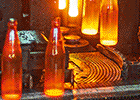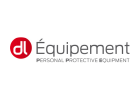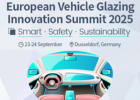EPDs provide reliable data on a product’s environmentally relevant properties over its entire life cycle and serve as the basis for green building assessments. SWISSPACER recently published the EPDs for its spacer bars and Georgian bar, marking the first visible step towards climate neutrality. The company has created a sustainability roadmap for achieving this overarching goal.
Green building assessments need reliable data on all the installed products. SWISSPACER takes this requirement into account by publishing EPDs for its products. All the data required for a sustainable building assessment are now published for the warm edge spacer bars SWISSPACER Advance and SWISSPACER Ultimate as well as for the Georgian bar. The Swiss company is the only supplier of spacer bars to provide precise details for all widths of spacer bars used in insulating glass units.
EPDs (Environmental Product Declaration, Type III declaration) which meet the requirements of ISO 14025 are independently verified. They provide transparent and comparable information on the environmental impact of products over their entire life cycle. Manufacturers of construction products issue EPDs to provide planners, architects and developers with reliable support and the data they need to obtain a sustainability certificate for a building – such as those in accordance with DGNB, BREEAM or LEED.
Climate neutrality at a glance
“Our philosophy is to make transparent and verified data available to our customers. That is also evident in our previously published studies on energy saving and living comfort,” says Victoria Renz-Kiefel, managing director of SWISSPACER. “We are highly committed to achieving this ambition and are using the EPDs as the starting point for our sustainability strategy.” SWISSPACER also plans to use the data in the EPDs to optimise its products and processes. In future, all areas from development and production, to packaging, logistics and administration will be subjected to scrutiny: “In each decision we take, we also evaluate the impact it has on the sustainability of our own work and on that of our customers.”
While preparing the EPDs, all information in the factory was taken into consideration, from the procurement and provision of raw materials to the manufacturing processes and the dispatch-ready goods. This revealed possible areas in which to make adjustments to reduce the GWP (global warming potential). SWISSPACER has combined these data and many other ideas and measures into a roadmap.
The company’s clearly stated long-term objective is to achieve climate neutrality. “As a subsidiary of the Saint-Gobain Group, we have been inspired by our Group’s carbon neutrality objective and this is motivating us to be a pioneer and to underscore our role as an innovation leader in the field of warm edge products,” says Renz-Kiefel. “Another of our long-term goals is to give our customers the best possible support on their journey to climate neutrality. Our results are intended to benefit the entire industry. We are convinced that the carbon footprint will become as important as the U-value in the long term.”
The company is gaining valuable experience from its participation in the research project NEST on the Empa campus in the Swiss town of Dübendorf. New technologies and concepts are being tested here to further advance sustainability in the construction industry. One ongoing project is investigating the framework conditions for eco-friendly construction – a central principle for achieving ambitious carbon targets. An efficient approach to the closing of cycles involves re-using materials and entire components. For example, the SWISSPACER Ultimate was installed as a frame in recycled glazing units.

























